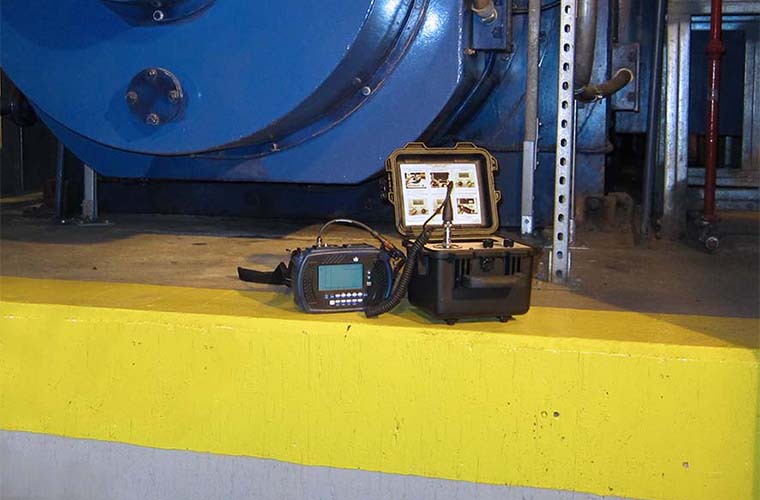Main Menu
- Home
- Product Finder
- Calibration Systems
- Calibration Services
- Digital Sensing
- Industrial Vibration Calibration
- Modal and Vibration Testing
- Non-Destructive Testing
- Sound & Vibration Rental Program
- Learn
- About Us
- Contact Us
 The Modal Shop's Portable Shaker
Tables are rugged pieces of equipment that can stand up to the day-to-day handling they receive in all kinds of environments. All portable shakers and vibration calibrators from The Modal Shop feature a naturally piezoelectric quartz
reference accelerometer. Quartz accelerometers offer superior stability over time and temperature, exhibiting minimal drift. This feature of the design allows The Modal Shop's shakers to maintain their accuracy over long periods. But if
you ever become concerned about the accuracy of your shaker, there's a quick and simple way to test its reference accelerometer right in the field using just a calibrated voltmeter. Watch the video below, "Verifying the Accuracy of Portable Vibration
Shakers and Calibrators On-Site," to learn more.
The Modal Shop's Portable Shaker
Tables are rugged pieces of equipment that can stand up to the day-to-day handling they receive in all kinds of environments. All portable shakers and vibration calibrators from The Modal Shop feature a naturally piezoelectric quartz
reference accelerometer. Quartz accelerometers offer superior stability over time and temperature, exhibiting minimal drift. This feature of the design allows The Modal Shop's shakers to maintain their accuracy over long periods. But if
you ever become concerned about the accuracy of your shaker, there's a quick and simple way to test its reference accelerometer right in the field using just a calibrated voltmeter. Watch the video below, "Verifying the Accuracy of Portable Vibration
Shakers and Calibrators On-Site," to learn more.
Remember: This is just a check to see if the calibrator is performing accurately at the reference frequency. It is not a substitute for regularly scheduled factory calibrations.
According to ISO 17025, it is the responsibility of the user to determine the appropriate factory calibration interval for instrumentation. If the facility is ISO 9001 certified, the interval is typically one year on any instrumentation related to quality. Thus, The Modal Shop’s default calibration reminder programmed into its portable vibration calibrator is one year. The reminder can always be changed and even turned off at the user’s discretion.
A number of factors, including test criticality and shaker handling, influence how often a shaker should be sent in for factory calibration. For example, in a refinery the portable shaker is often used to confirm vibration shutdown logic in a Safety Instrumented System (SIS). The SIS protects personnel working around rotating machinery, so shaker accuracy is of the utmost importance. Also, in this environment the shaker is transported around the plant, increasing the possibility of mechanical damage should a severe drop occur. Contrast this with an automotive test cell application where the shaker is used as a “sanity check” or troubleshooting tool. In this case, the shaker is often supplementing an existing calibration program. It may not be the “last line of defense.” It also is unlikely that the shaker will be subjected to harsh conditions and difficult transport.
The verification test shown above is a great way to test the shaker between calibrations and ensure confidence in the shaker. After assessing the risk, technicians can even choose to extend the calibration interval based upon the results of this quick verification. But it is not a substitute for factory calibration. The Modal Shop’s calibration service involves a complete multi-point test of the instrument, battery test, and possible firmware upgrades. The process is NIST traceable and accredited to the ISO 17025 standard by A2LA. Contact us for details.